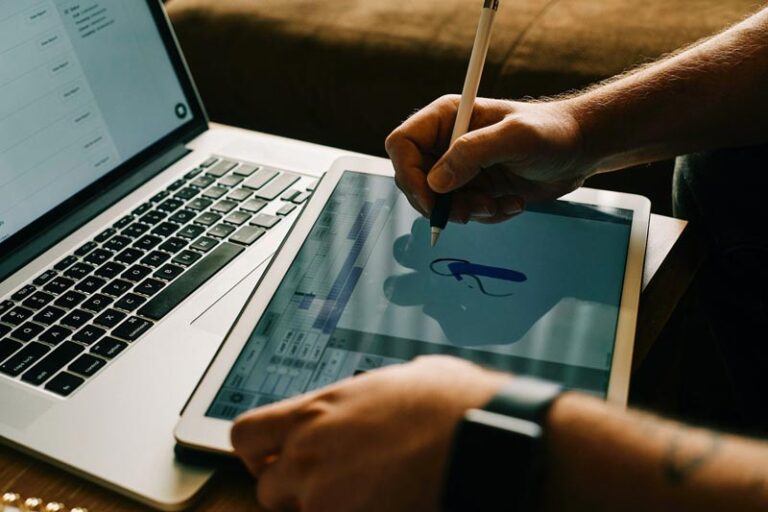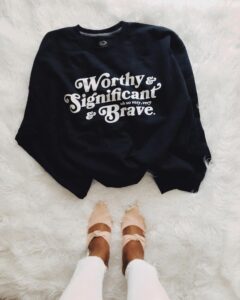Custom printed sweatshirts have become increasingly popular in recent years, with people wanting to create personalized clothing that reflects their unique style and personality. But have you ever wondered how these custom sweatshirts are made? From concept to creation, the process involves a combination of design, printing, and manufacturing techniques. In this article, we’ll take a closer look at the custom sweatshirt printing process, including the steps involved in designing the sweatshirt, preparing for printing, printing techniques, manufacturing the sweatshirt, and quality control.
Designing the Sweatshirt
The first step in creating a custom printed sweatshirt is designing the sweatshirt. This involves using software and tools to create a design that can be printed onto the garment. Depending on the printing technique that will be used, the design may need to be created in a specific format or color profile.
Designing a custom sweatshirt can be a fun and creative process, but it’s important to keep a few things in mind. First, consider the placement of the design on the sweatshirt. The design should be easily visible and centered on the sweatshirt. Second, consider the colors that will be used in the design. The color scheme should be consistent and appealing to the eye. Finally, think about the message or image that the design conveys. A well-designed custom sweatshirt should reflect the wearer’s personality or message.
Preparing for Printing
Once the design is complete, the next step is to prepare it for printing. This involves converting the design into a format that can be used by the printing equipment. Depending on the printing technique that will be used, this may involve separating the design into different colors or layers. It’s important to ensure that the design is of high quality and resolution, as this will affect the final product.
Another important consideration when preparing for printing is the choice of fabric for the sweatshirt. Different fabrics have different properties and require different printing techniques. For example, cotton is a popular choice for custom sweatshirts, as it is comfortable, durable, and easy to print on. However, if the design includes a lot of detail, it may be better to use a polyester or tri-blend fabric, which can hold finer details.
Printing Techniques
There are several printing techniques available for custom sweatshirts, each with its own pros and cons. One of the most popular techniques is screen printing, which involves using a stencil to transfer the design onto the sweatshirt. Screen printing is ideal for large runs of sweatshirts, as it is cost-effective and produces high-quality prints. Another technique is direct-to-garment printing, which involves printing the design directly onto the fabric of the sweatshirt using specialized inkjet printers. This technique is ideal for smaller runs of sweatshirts, as it allows for more intricate designs and colors.
Embroidery is another popular printing technique for custom sweatshirts. This technique involves stitching the design onto the sweatshirt using thread. Embroidery is ideal for creating a more upscale look and feel for the sweatshirt, as it creates a raised texture that can be seen and felt.
Manufacturing the Sweatshirt
Once the sweatshirt has been printed, the next step is to manufacture the sweatshirt. This involves cutting the fabric to size, sewing the sweatshirt together, and finishing it with cuffs, hems, and other details. Manufacturing is a crucial part of the custom sweatshirt process, as it determines the final fit, comfort, and durability of the sweatshirt.
Quality Control
Finally, before the custom sweatshirts are shipped to customers, it’s important to perform quality control checks to ensure that they meet the desired standards. This may involve checking for color accuracy, print quality, and overall construction. Quality control is essential to ensuring that customers are satisfied with their custom sweatshirts and that the manufacturer maintains a good reputation in the industry.
Direct-to-film printing is another versatile and efficient technique commonly employed in the garment industry for producing custom apparel designs. This printing method involves using a Prestige L2 DTF printer, which directly transfers ink onto film sheets, creating high-quality and detailed images with vibrant colors.
In addition to quality control, it’s important for manufacturers to consider sustainability and ethical production practices. More and more customers are becoming conscious of the impact that clothing production can have on the environment and on workers. Manufacturers can address these concerns by using eco-friendly materials, reducing waste, and ensuring fair labor practices.
Conclusion
In conclusion, custom printed sweatshirts are a fun and creative way to express personal style and message. The process of creating a custom sweatshirt involves several steps, including designing the sweatshirt, preparing for printing, choosing a printing technique, manufacturing the sweatshirt, and performing quality control. By understanding the custom sweatshirt process, customers can make informed decisions about their purchases, while manufacturers can create high-quality, sustainable, and ethically-produced sweatshirts that meet customer expectations.



0 Comments